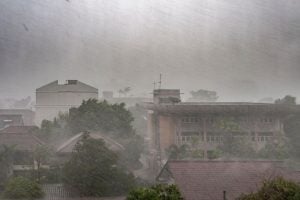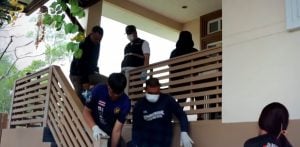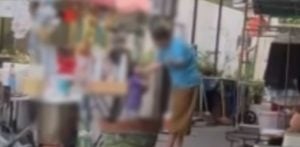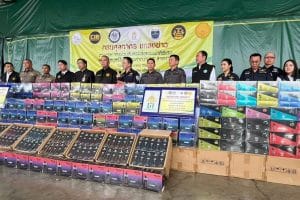Irrawaddy dolphin to be returned to natural habitat in Prachin Buri
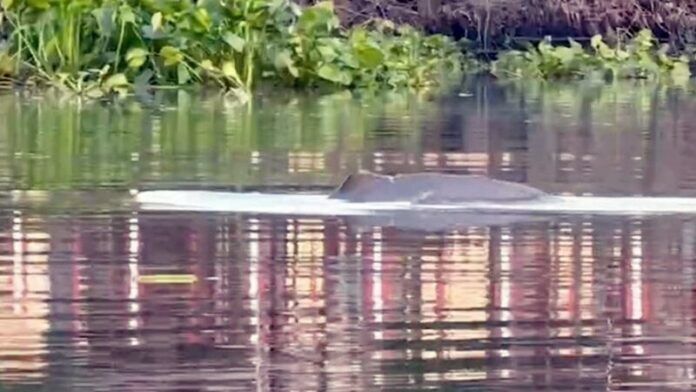
Fishing officials are preparing to return an Irrawaddy dolphin, also known as a bottle-nosed dolphin, back to its natural habitat after it was spotted feeding on fish in the Prachin Buri River yesterday, January 21. The sighting near Wat Bang Tan, Wat Bang Yang, and Wat Bang Toei attracted attention on social media when photographs were posted online.
Setthawut Wonglawut, district chief of Ban Sang, Prachin Buri province, confirmed that the dolphin was seen swimming and feeding on small fish in the Prachin Buri River near Wat Bang Tan, Moo 2, Bang Tan subdistrict, Ban Sang district. Residents captured videos and images of the dolphin, prompting local officials to monitor the situation closely.
The district is coordinating efforts with fishery officials, natural resources and environment officials, village chiefs, and village heads, especially due to the saline water intrusion in the Prachin Buri River during this period.
Pitiphon Nilphat, head of the fisheries management group at the Prachin Buri Provincial Fisheries Office, explained that the dolphin has been circling three areas in front of Wat Bang Tan, Wat Bang Yang, and most recently, Wat Bang Toei. The dolphin resembles an Irrawaddy dolphin with a bottle-shaped nose.
Efforts are underway to relocate the dolphin urgently back to its original habitat at the mouth of the Bang Pakong River in the Gulf of Thailand. The dolphin was first sighted on January 19 near Wat Bang Tan, followed by Wat Bang Yang on January 20, and most recently today at Wat Bang Toei.
Currently, the fisheries department is tracking the dolphin’s location within these three spots and has advised locals to refrain from using nets and trawl nets while fishing. This precaution is necessary as the dolphin might consume fish caught in these nets, reported KhaoSod.
All villages have been informed to temporarily discontinue the use of such equipment to ensure the dolphin’s safety. Relocating dolphins is challenging, particularly when dealing with healthy and agile dolphins, which can skilfully avoid nets. The process is more manageable with dolphins that are sick or injured.

Latest Thailand News
Follow The Thaiger on Google News:











